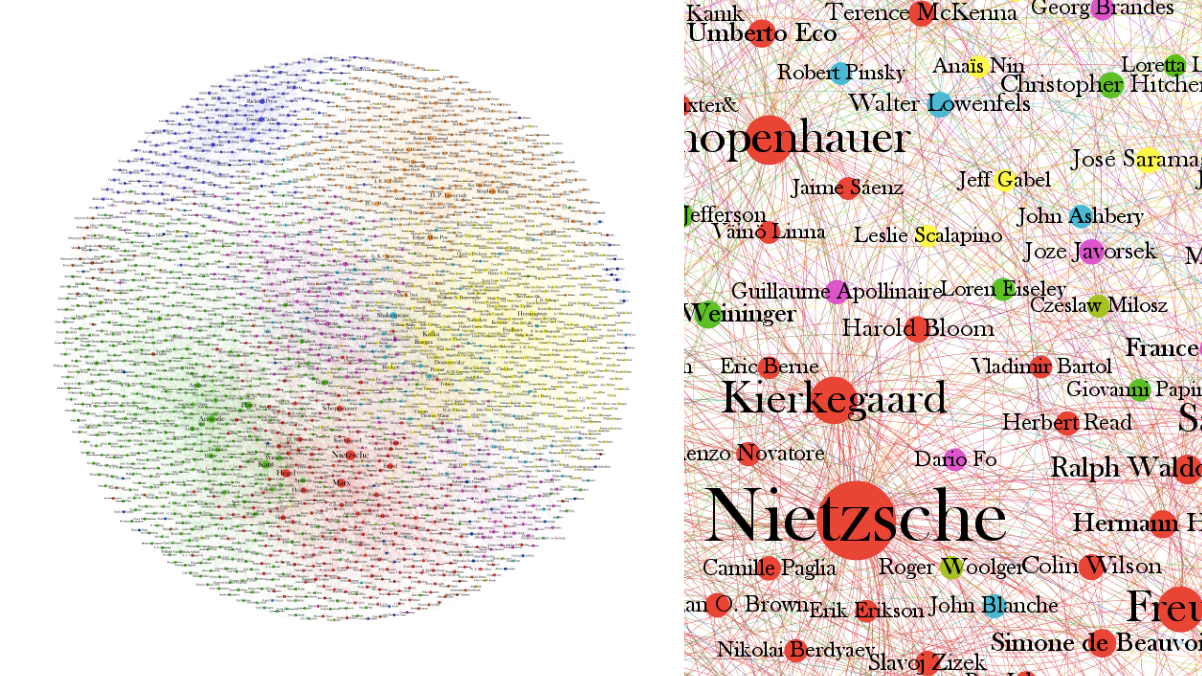The Graph of Ideas by Brendan Griffen
Two things I know are true: That Rachael Wilkinson's impression of SNL's Drunk Uncle rivals Drunk Uncle himself and that Art.sy’s Fan page is the best source on Facebook for wonderfully distracting food-for-thought. I recently came across yet another dynamic infographic of sorts- the "Graph of Ideas." It presents a beautiful, interconnected and thready web of “Every Big Idea, Ever.” According to Suzanne LaBarre in an interview with map creator Brendan Griffen,
Each node represents one historical figure, and the nodes are color-coordinated to represent specific eras or fields of expertise (red for 19th- and 20th-century philosophers; orange for fiction authors; purple for comedians; and so on). Like-minded people are grouped together, and linked to all their influences, as well as everyone who has influenced them. The more influential a person, the bigger his or her node.
Griffen includes in the map every profile on Wikipedia that has an “influenced by” or “influences” field. Though the map is well-stocked, some great thinkers are absent (athletes and sculptors for example) from it. Griffen explains in the interview,
“I was limited [by] the dataset. Most of the people are philosophers and authors primarily because these are text-driven endeavors. Presumably fans of philosophy and books have entered in the information which sort of makes sense given their overrepresentation in the graph. Sports fans are unlikely to enter these into Wikipedia and so they are underrepresented. Similarly with artists but to a lesser extent.”
Basically, it is a map of the people Wikipedia contributors care about/care to write about. Though this may be the case, it is no less fascinating to explore just how interconnected these great thinkers are. Griffen's final message is inspirational, retrospective, and forward-thinking:
"Everyone is the collective sum of everyone else. We often think great thinkers, scientists, and authors sit in isolation in some cloister waiting for that eureka moment to come to them in a lightning storm. The truth is, the process of discovery forces us to consciously or unconsciously draw on all of our known, and perhaps more significantly, unknown antecedents of knowledge and wisdom to come up with new solutions to the problems we’re facing today."
